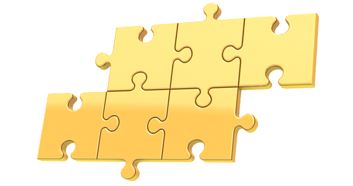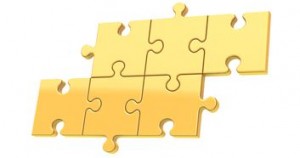
ArcGIS is used everywhere so chances are if you are in GIS you have used it before. But even so, you may not be familiar with all of the geoprocessing tools and features available to help make analysis and map production easier. I have listed below a few techniques that may be new and useful to you, some which I have found and others that were taught to me.
CAD to Geodatabase tool
When you use this tool to convert CAD data, the annotation is treated like polygon data. Spatially joining using the Spatial Join tool may or may not result in correct labelling based on how the annotation labels are assigned to each line/polygon. Try using the Feature to Point tool to convert the annotation to a point, and then use the Spatial Join tool.
Find Identical
If you have the Advanced licence, Find Identical is a very handy tool for cleaning up data. You can assign criteria fields and it will find records that are identical based on the criteria. The tool outputs a table identifying pairs of identical data by their object ID fields.
Field Calculator
This is accessed in ArcMap by right-clicking on a field in an attribute table or using the tool Calculate Field. It is very handy and can be used to rapidly populate any kind of data into fields, whether as a mathematical calculation based on other fields, or text (wrapped in double quotation marks), or a Visual Basic or Python command. It can be used inside or outside of an Edit session (though outside of an Edit session the results are irreversible). If records are selected, only those will be calculated.
Merge vs. Union
Which to use? Merge assembles multiple feature classes of the same data type into a single output, including all of their attributes. It allows these features to overlap in space if they overlap but preserves their original forms (i.e. new polygons are not made from the overlapping space). It is handy for combining several datasets and everything they contain.
Union combines feature classes by putting them all on the same plane, and creating new polygons where overlaps exist. Union is handy when you are trying to identify where datasets overlap, or where they don’t. The tool creates a field called FID for the ObjectID numbers of each input. A dataset is assigned a value of -1 where it does not exist. Therefore it is possible to make queries to identify specific features.
Append
The Append tool is a great way to add missing features into a feature class. It gives an option to ‘Test’ or ‘No Test’; Test requires matching schema of the appended information but No Test does not; however, No Test will omit any attributes that belong to fields that don’t already exist in the target dataset.
Data Loader
The data loader in ArcCatalog is a great way to compile many datasets where only a few fields are needed. It is a bit time-consuming, but it is a very clean way to compile data. All that is required is an empty shapefile or geodatabase feature class containing the desired schema, and input datasets containing fields with the desired data (the names need not match, but the data types should match the target, and the text field lengths cannot be longer than that of the target). Then right-click on the empty feature class and select Load–>Load Data and proceed with the wizard. ArcGIS tries to help match fields but you will need to verify them for each input dataset.
One word of advice that makes loading data easier, especially when verifying the loaded data, is making a field for all of your input datasets and the target dataset that identifies the source dataset. For example, if you’re working with data across Canada and the input datasets are for each province, you could have a Province field for each one and populate it with the name of the province.
One-to-Many Joins
Normally you cannot do 1:M joins in ArcGIS. A straight join will result in only the first items in the table with many matches joined to each record in the one item list. ArcGIS handles this problem by using relates instead, where you can access related data from the many item table separately. However, there is a way into tricking ArcGIS into doing 1:M table joins.
Using the Make Query Table tool, select both tables as the input tables and select all fields to be used. Use the SQL general expression One.MyField = Many.MyField to link the two fields. Finally, Select USE_KEY_FIELDS as the Key Field Options and check the two link fields in the Key Fields box. Once the query table is made, export it to wherever you want it stored. The end result will be a table with one instance of the ‘one’ records for each of the ‘many’ records.
Data Driven Pages
This is a very useful toolbar that you can use to generate a sequence of maps using a single map layout, saving the work of creating them one by one. Your automated maps might be based on dynamic data, scales, extents, etc. You can print PDF documents of all maps or build map books using Arcpy. It is worth checking out.
Hopefully some of these tools and techniques are new to you and will help you perform spatial tasks easily and more efficiently.





Be the first to comment